PROJECT DESCRIPTION
“If I'm sinful and drunk – it's not a vice
The poet who has not sinned is like a hookah unlit
Only he who has tasted a thousand cherries
Resembles a drunken cherry, like a wise Khayyam”
(Omar Khayyam)
Discovery phase
Around two years ago I was approached by a European company asking me to design a "near-future" hookah – technologically advanced, functional, convenient to use, and aesthetically refined. The company wanted an eye-catching interior object that would combine the traditions of the past with the technologies of the future, and that would also project a strong image of a high quality of life.
The hookah has been a part of worldwide culture for nearly a thousand years. It symbolizes unity and generosity, and has been acclaimed in the works of many famous authors, not only from the Middle East and Indian subcontinent where the hookah originates. Alexandre Dumas, Lewis Carroll, Edgar Poe and many others used hookah smoking as a strong artistic image that represented rituals and secrecy.
Nowadays, hookah production has evolved into a separate industry, with exhibitions, specialized shops, smoking parlors and a corresponding service network; and technologies, materials, processes, trends, and markets that are continuously evolving. Hookahs are still enjoyed primarily by avid smokers – devotees. It’s like a club for aficionados, which is somewhat closed to outsiders.
The challenge was intriguing, and the customer’s goal achievable.
Finding the conceptual solution
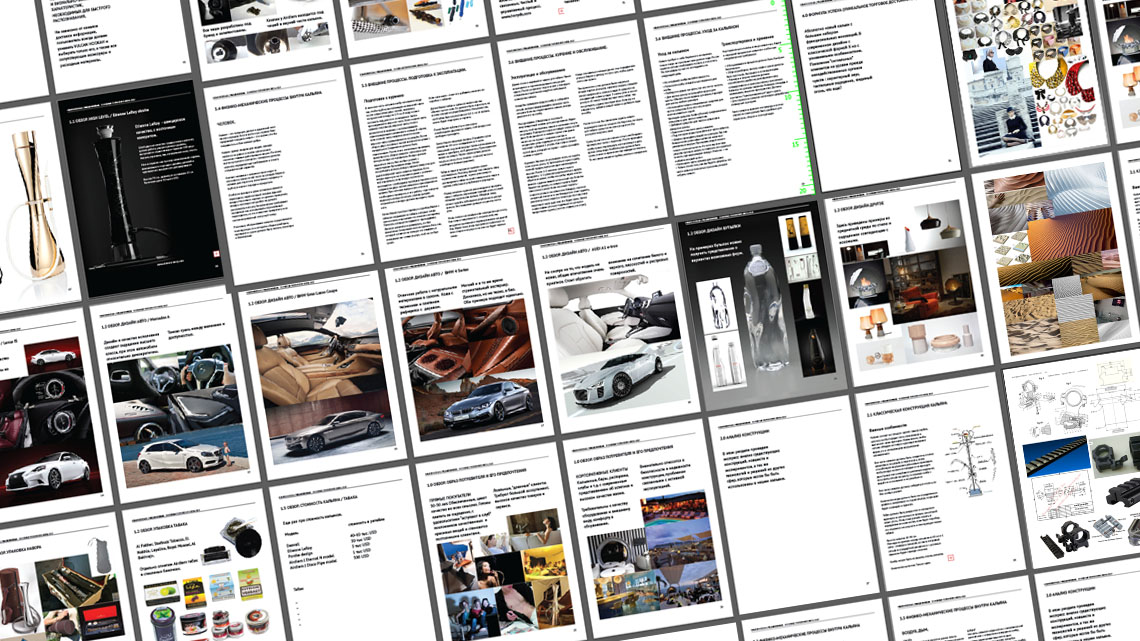
The first phase necessitated research into hookah history, culture, and model design, including functional properties and production technologies. This initial design phase holds the utmost importance for the optimal development and success of the project, and we began our search for the conceptual solution of a hookah with new and unique features in close collaboration with the customer. To establish the foundation for the new design, we launched a wide research campaign, looking into all the details, nuances and unseen processes of typical usage and maintenance scenarios.
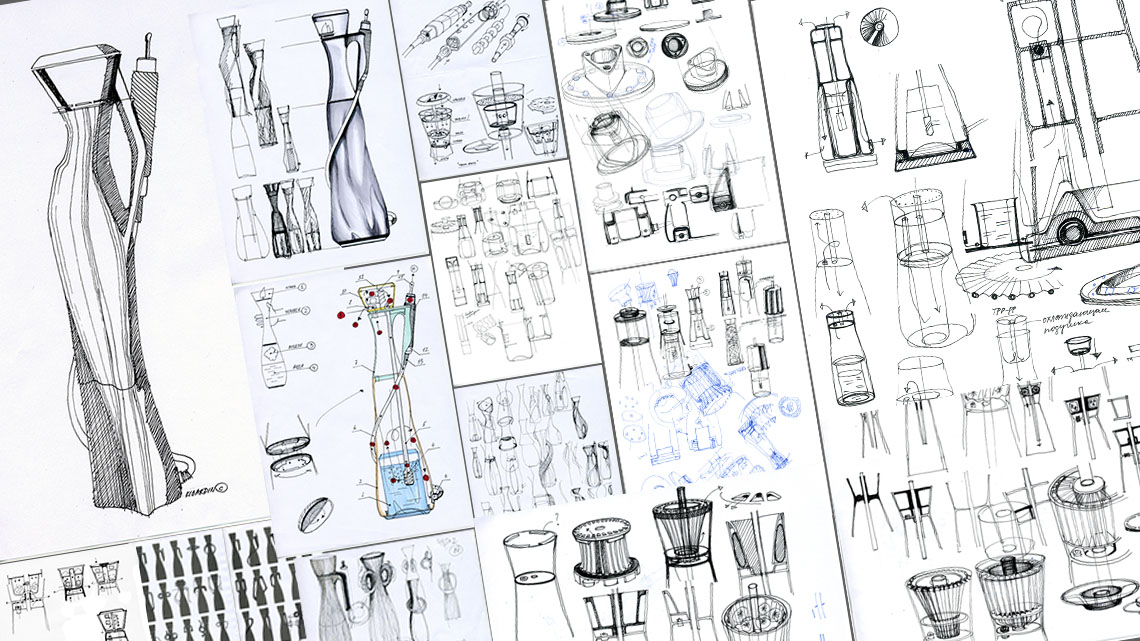
To firmly establish customer confidence and optimize engagement, the initial phase always includes production of conceptual sketches. These are not yet sketches of future products, but rather images that match the customer’s expectations, for example in terms of branding philosophy and current consumer demands.
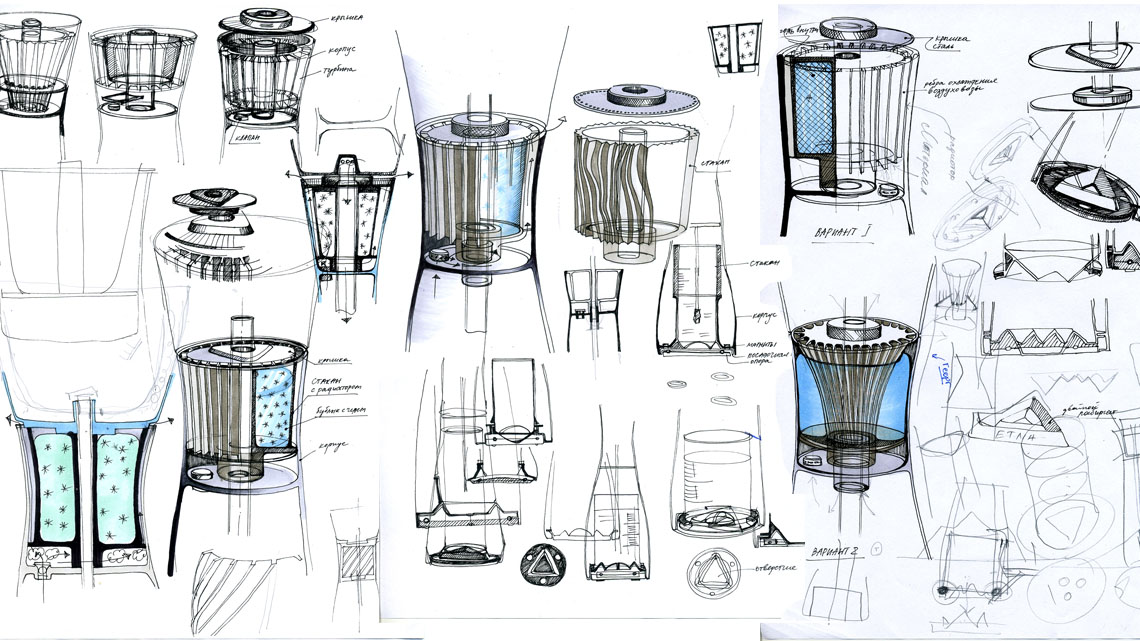
These conceptual images usually become the roadmap for the remainder of the design process.
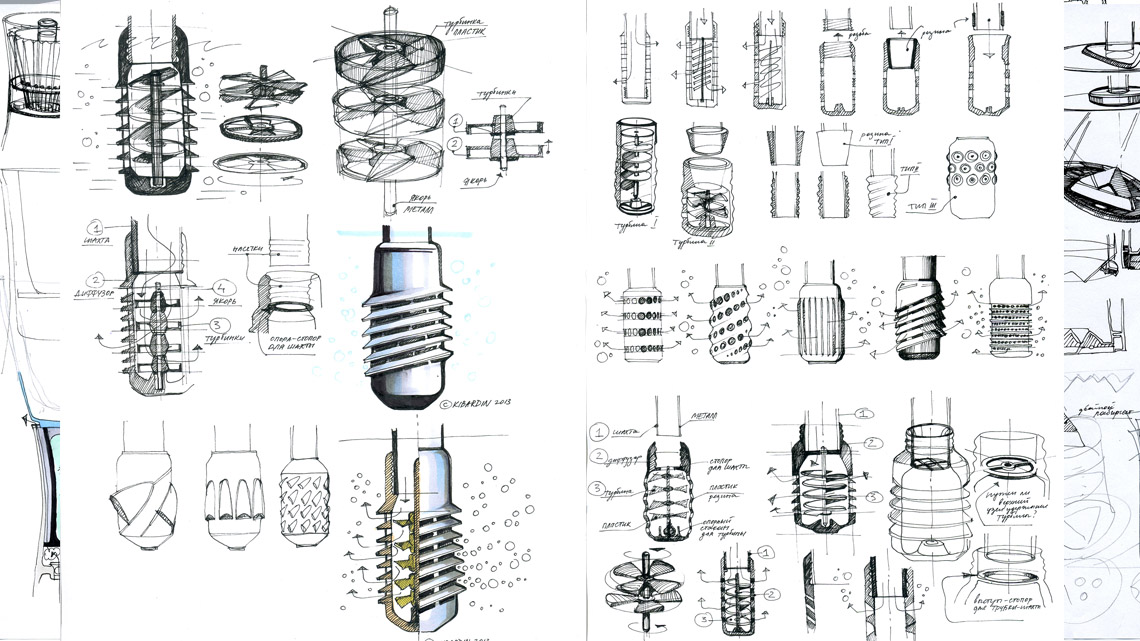
As new information kept coming in, we refined and corrected the specifications for our future hookah, edging nearer to a clear understanding of its forms, materials, technology, assembly schemes, and usage patterns – from the general to the specific. In addition to sketches, we employed the techniques of rapid, paper-based prototyping, as customers are generally more willing to provide detailed critiques of these simpler models. This provides an excellent platform for assessing ideas and gaining a better understanding of the project objectives.
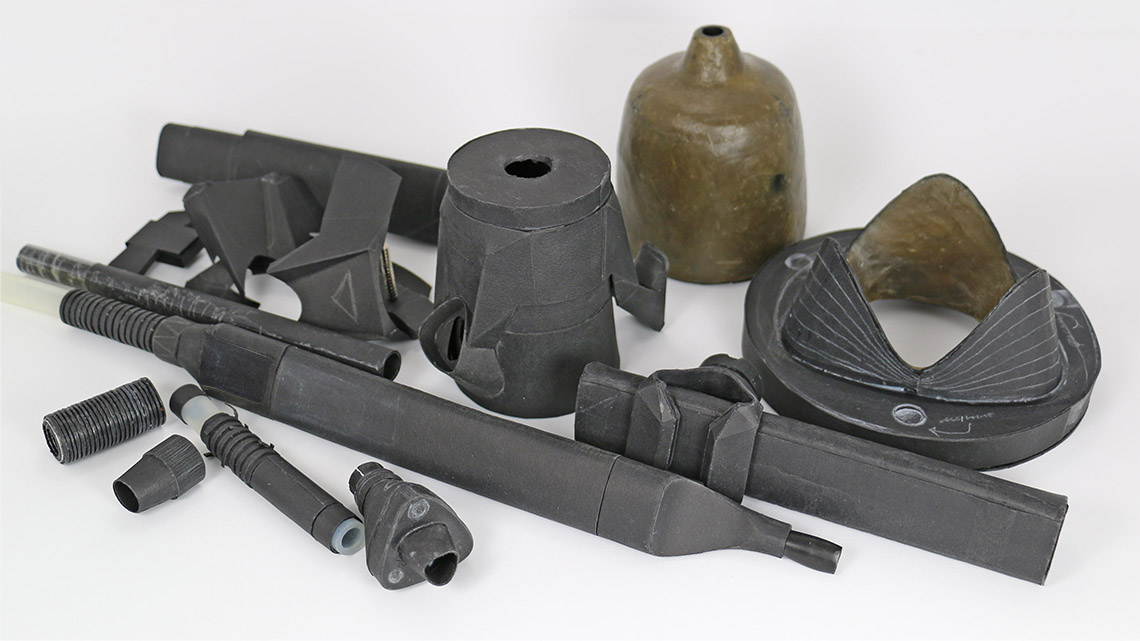
Throughout the whole duration of the project, we produced prototypes and models with varying levels of complexity. Our prototyping process usually consists of several stages.
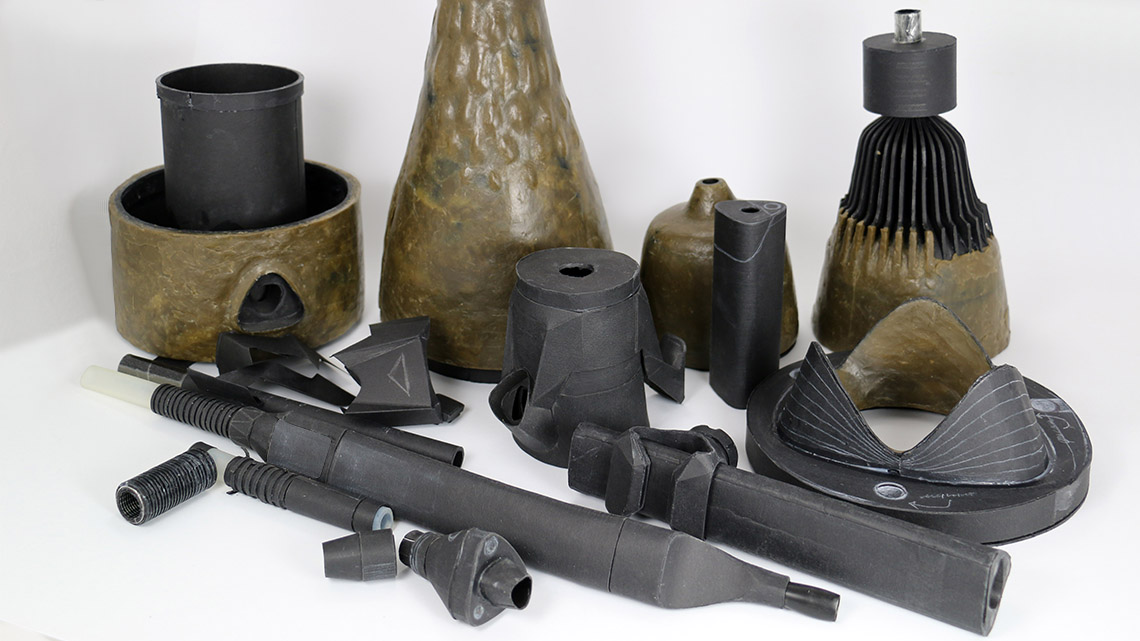
The process was interactive, with constant participation from customer representatives, who provided feedback on conceptual models and helped with quick decisions on key issues.
3D modeling phase
Based on the agreed solutions and concepts, we moved on to the 3D modeling phase. This phase allowed us to examine, refine, and test the product in a virtual mode without needing to go into the actual production cycle. Since 3D projects are nearly identical to the future product, we can continuously check and ensure the quality and accuracy of the production runs.
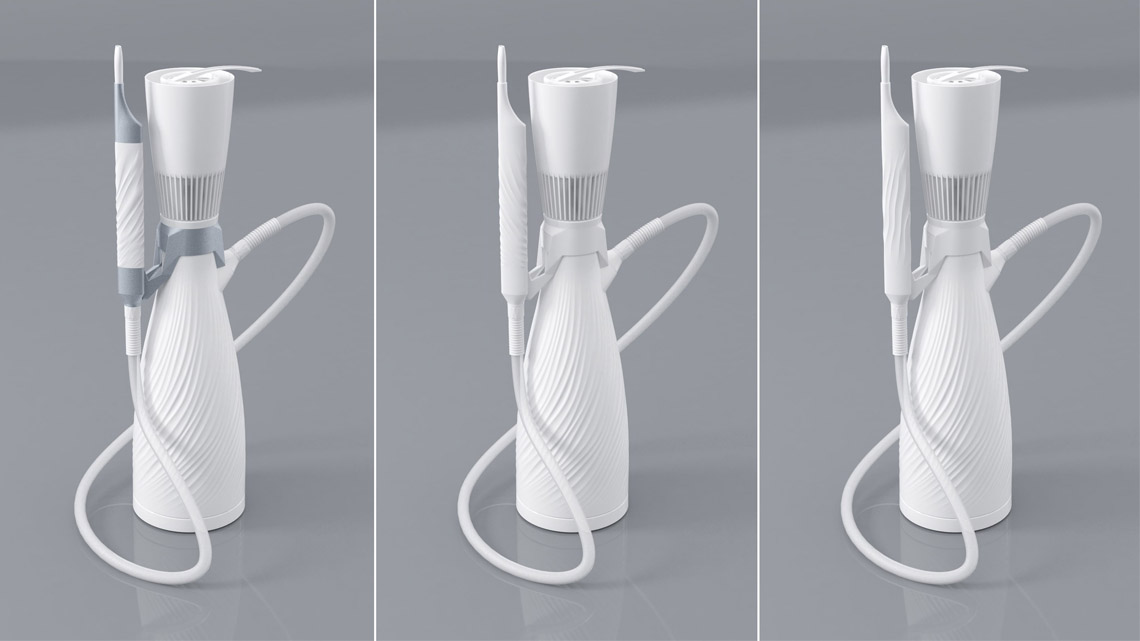
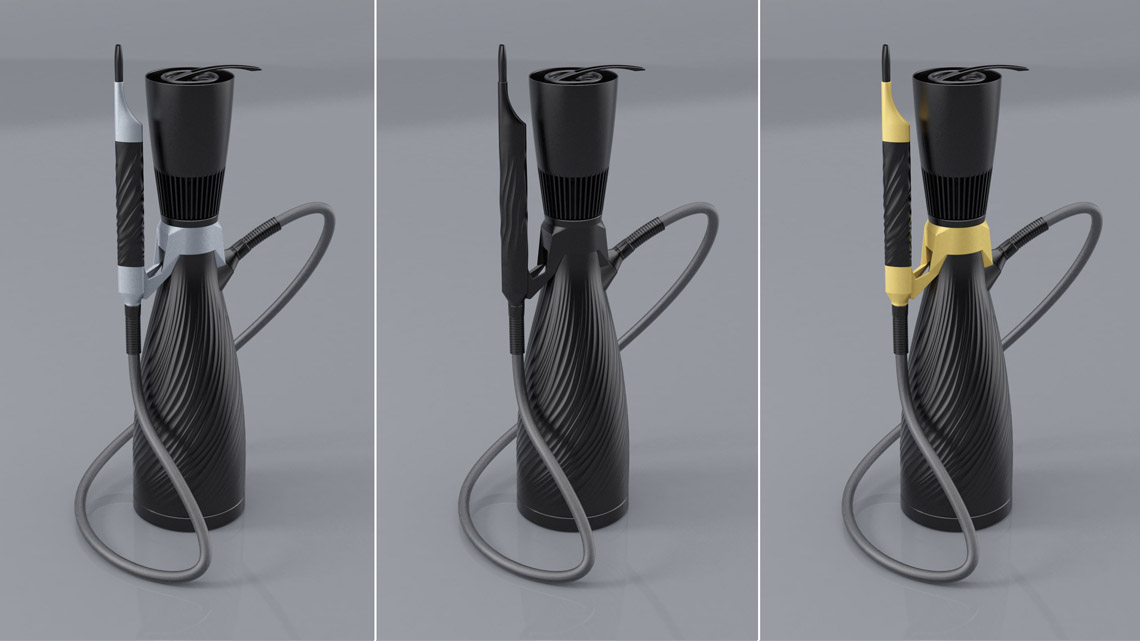
Using new standards of photorealistic visualization, there’s no longer any need to photograph the final product. The 3D modelling phase results in a complete and detailed image of the product that can be used to collect customer reviews, get approval, and initiate customer marketing processes. This phase entails the approval of not only the general product design, but also the finishing materials, colors, texture, and other visual-tactile characteristics.
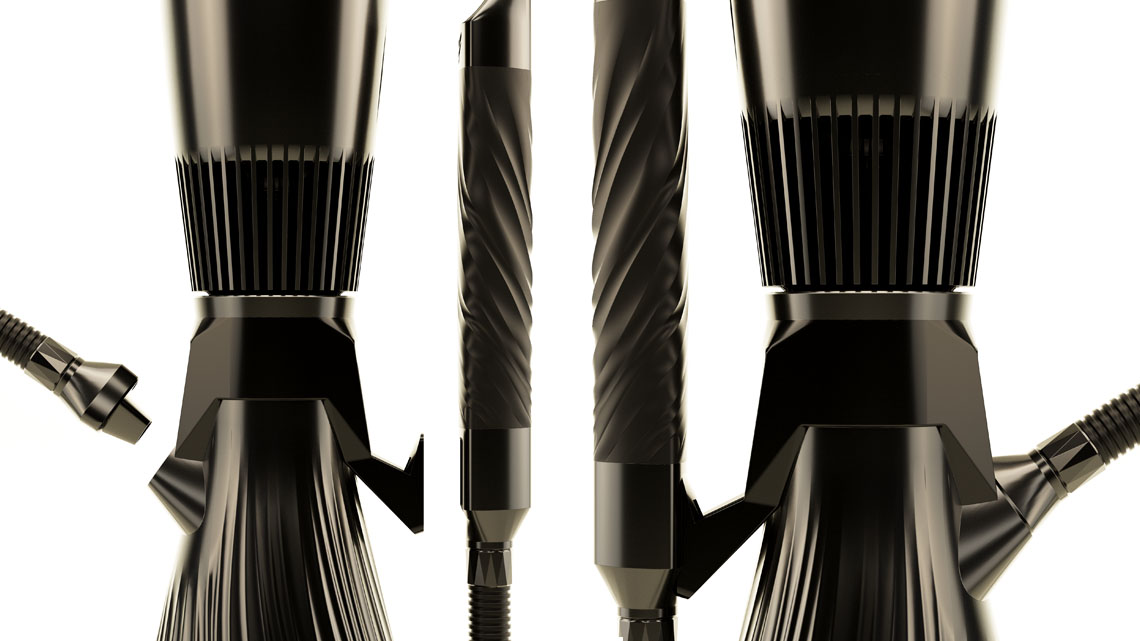
Magnetic connectors automatically snap into the correct position and reliably lock the pipe relative to the hookah body
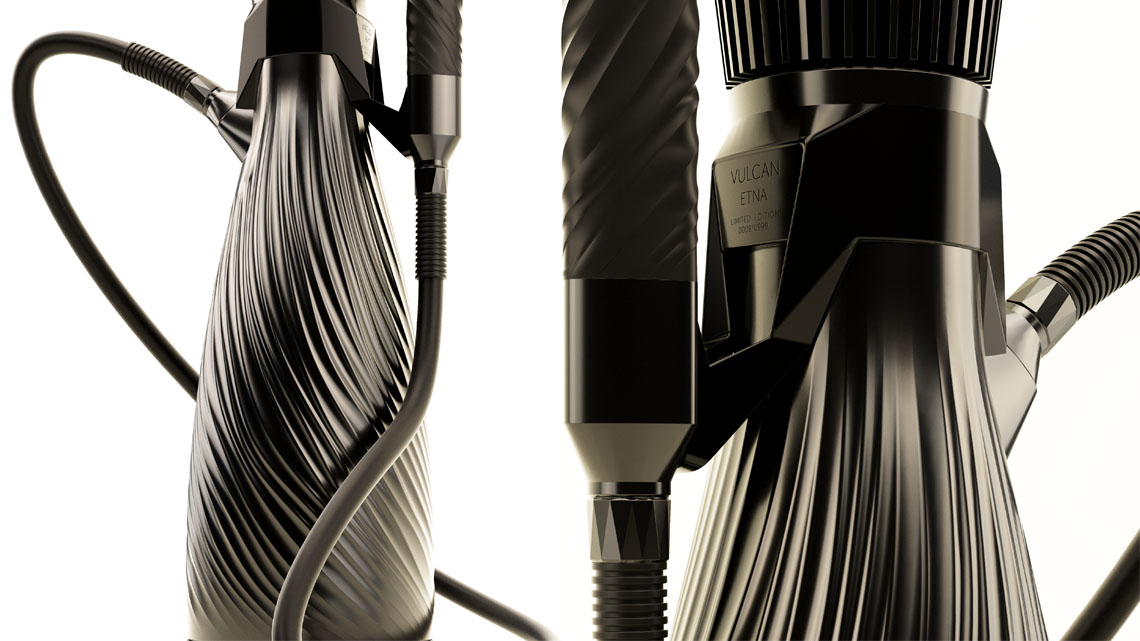
The coupling of the hose and pipe with the hookah body
Prototyping and specification phase
It was initially assumed that the hookah’s bowl would have a complex form with a vertical wall dividing it into two sections – one containing the coals and the other for the tobacco cup. Moreover, the tobacco would be provided in the form of special ready-to-use capsules. A user would choose the flavor, puncture the capsule, and place it inside the cup. After a long search and detailed experimentation, we produced a solution that met our requirements.
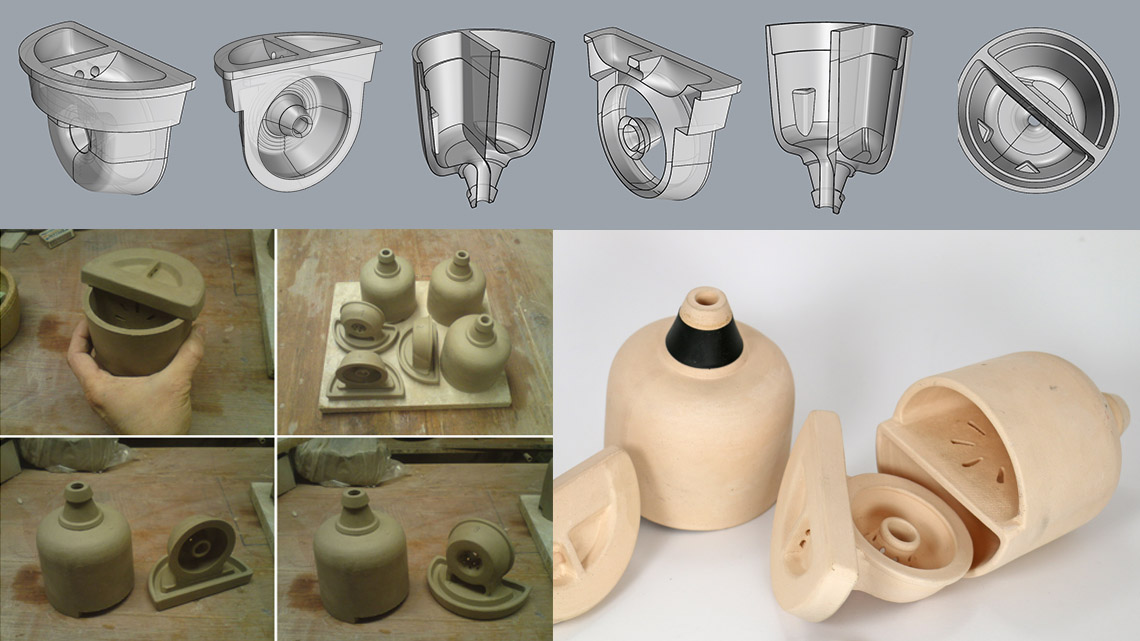
However, due to this hookah’s complexity and the high cost of mass production, we also developed an alternative, traditional option - the "universal" bowl.
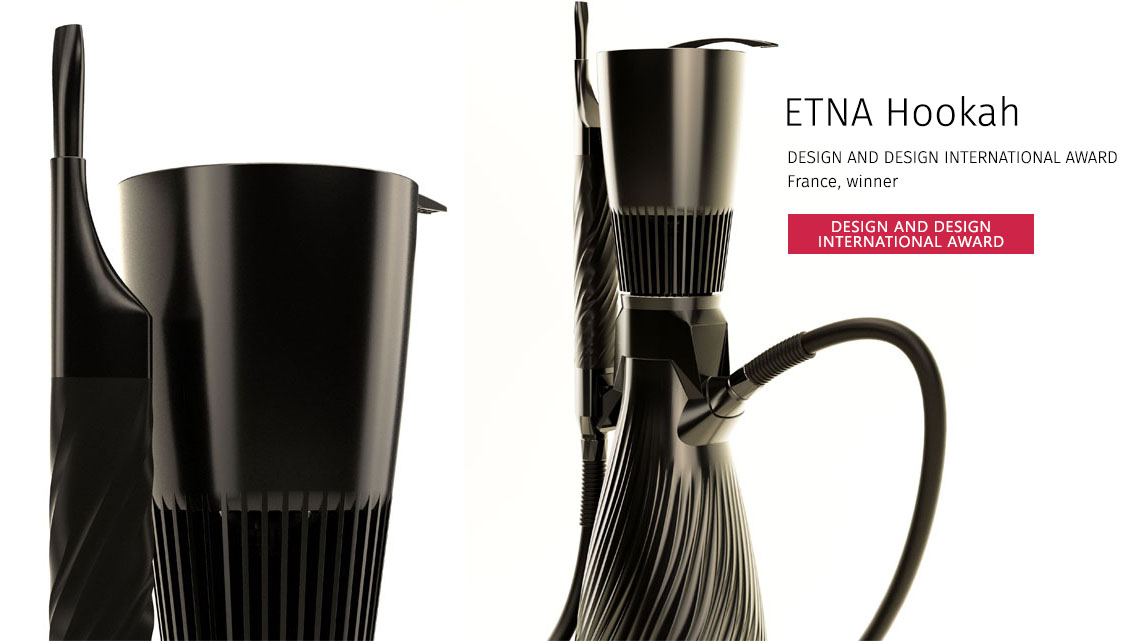
Therefore two versions of bowl and heater were designed - traditional and innovative (capsule based).
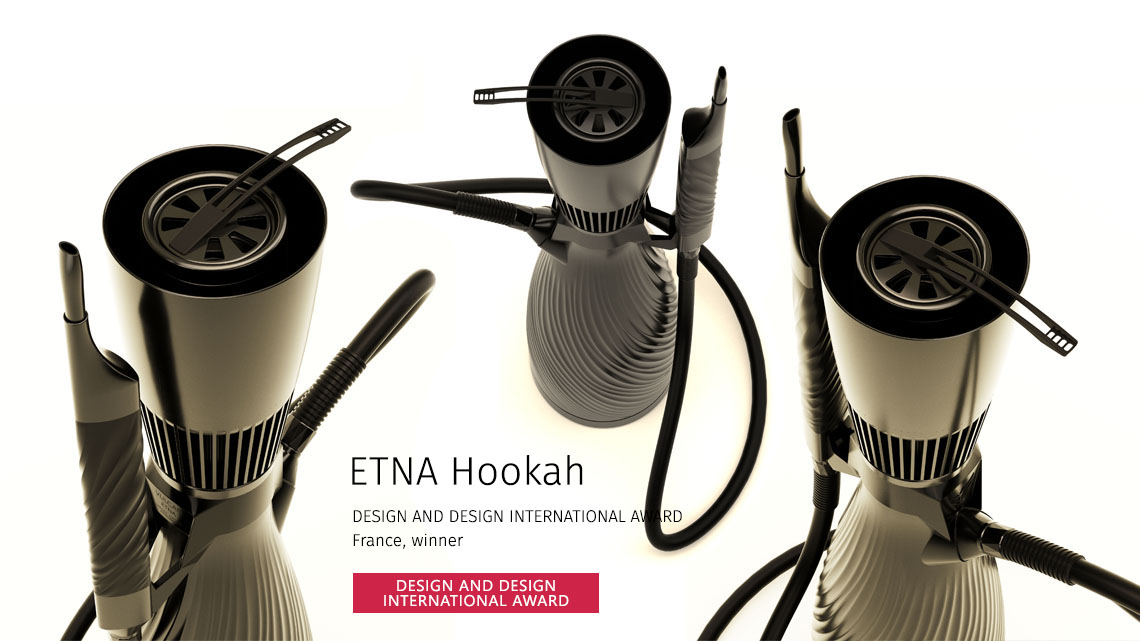
The traditional bowl will fit all types of hookahs equipped with a standard conical bowl stem. A special heater was designed that allows us to control the temperature inside the bowl simply by turning the handle, which enlarges or reduces the size of the holes in the cover.
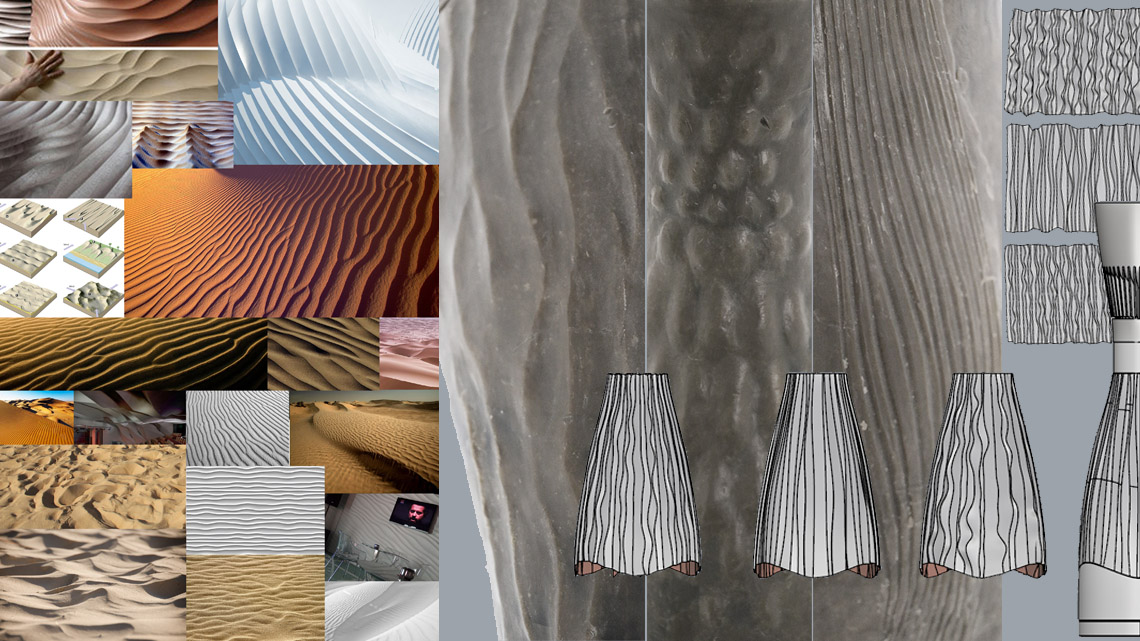
Unexpectedly, the ornament on the hookah base was cause for many discussions. The pattern we desired was to be reminiscent of the relief of sandy dunes, mirages in hot air, swirling smoke – a fabric enveloping a beautiful body. We went to tremendous lengths to satisfy the customer’s needs before the final version was approved, ensuring the correct frequency, angle, and intensity of the brush strokes, depth of the relief, degree of smoothing of the dune peaks, and transition of the pattern’s border into the hookah’s flat surface.
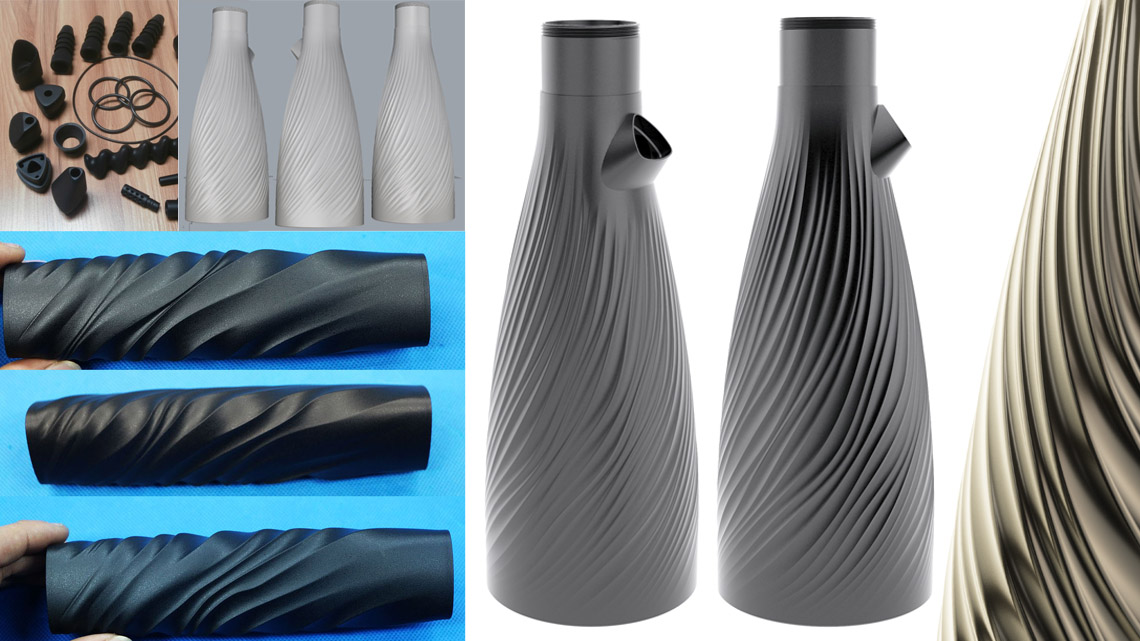
When the preliminary solution was found, we moved on to the second prototyping phase. The pattern covers the surface of the base and the pipe cover. Three versions of each were produced before the final decision was made.
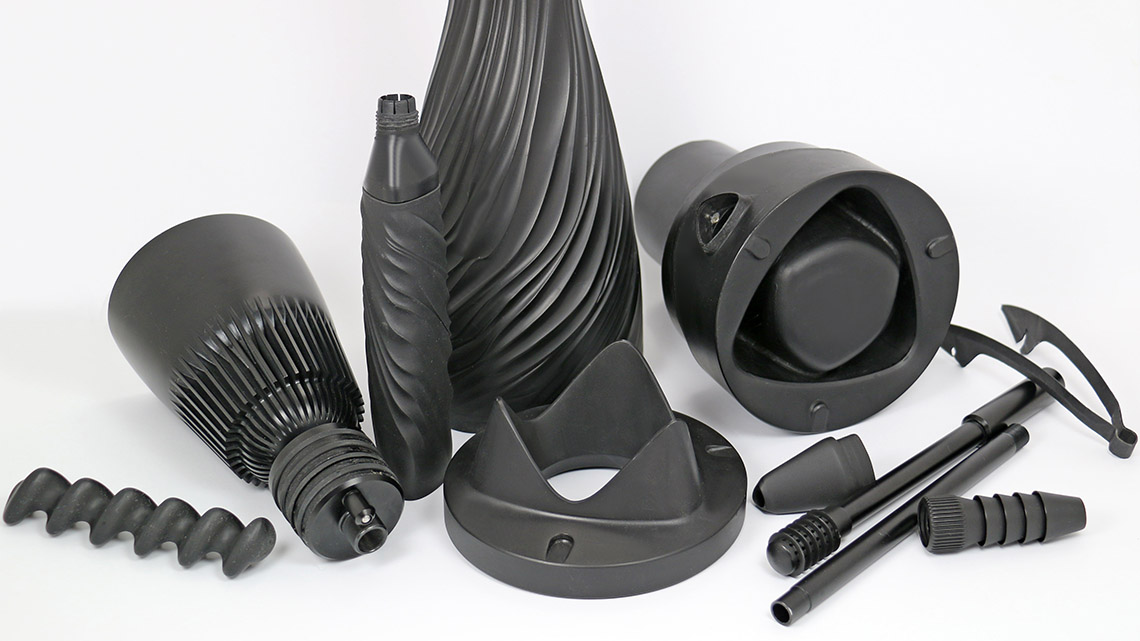
Models from ABS plastics, metal, rubber, and ceramics using 100% scale. These models were necessary for in-depth evaluation of the features, and general assessment of the forms.
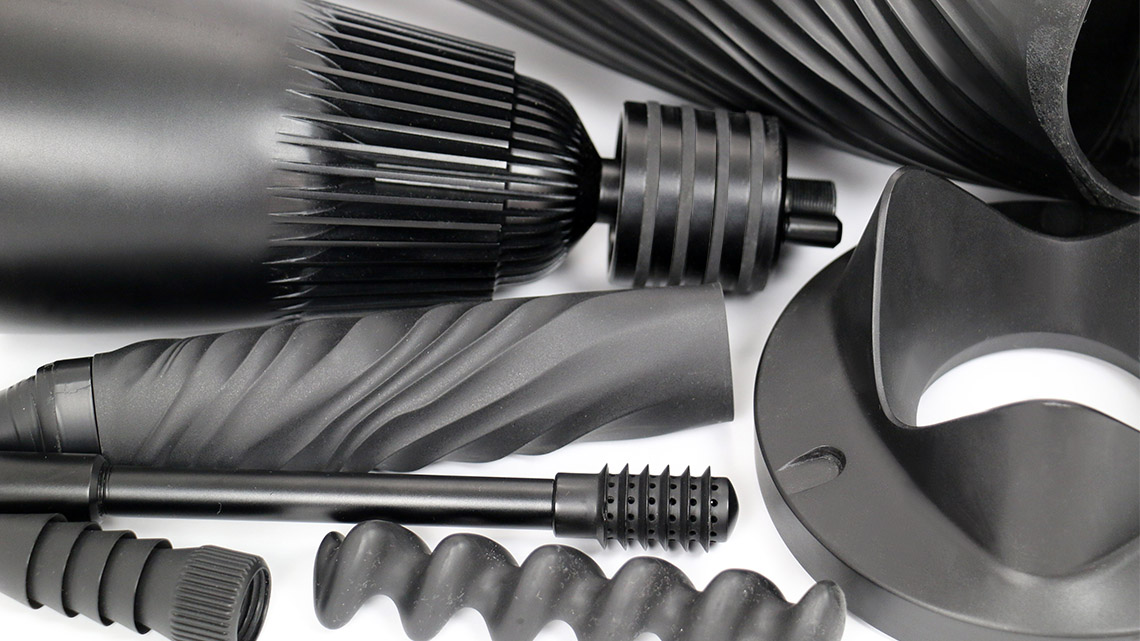
After examining the produced samples, we made final tweaks to the design, pattern, and size of the parts, which allowed us to advance to the final stage of the project. The completion of the modeling phase includes the production of technical documentation, technical drawings, 3D models and files, and specifications according to the customer’s requirements.
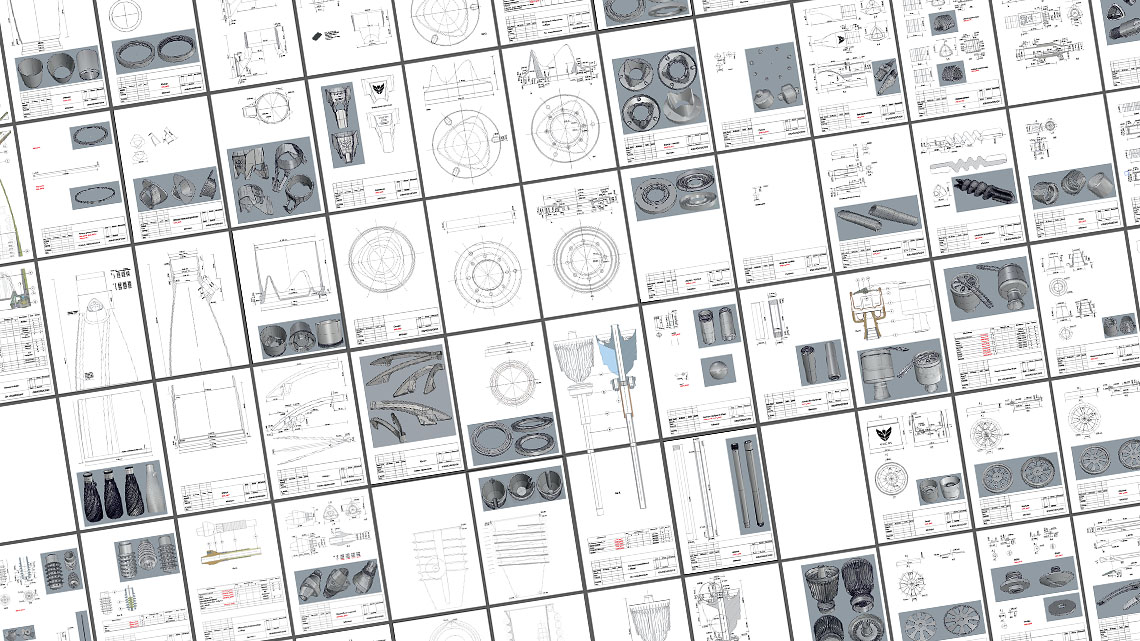
All technical drawings are accompanied by 3D images and models, as well as the files necessary to produce each part.
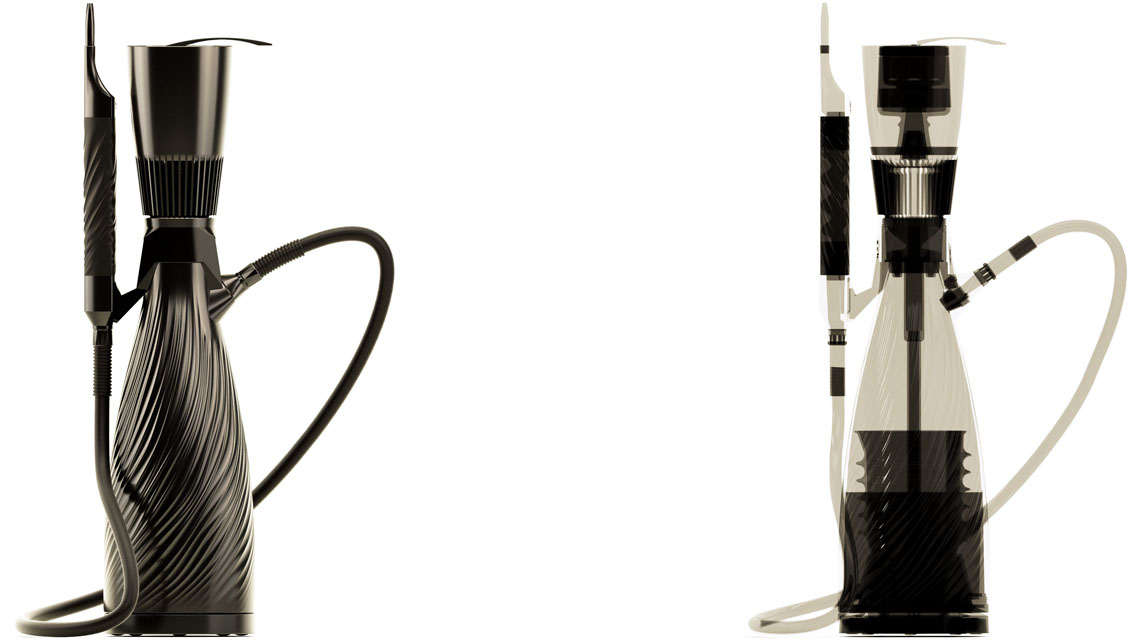
During the final phase, future products are produced onsite at customer facilities, using the materials and technologies of industrial mass production, in order to discover and eliminate any and all potential risks. At this stage we completely finalize the product characteristics down to the finest detail, resulting in a production sample that is ready for large-scale production.
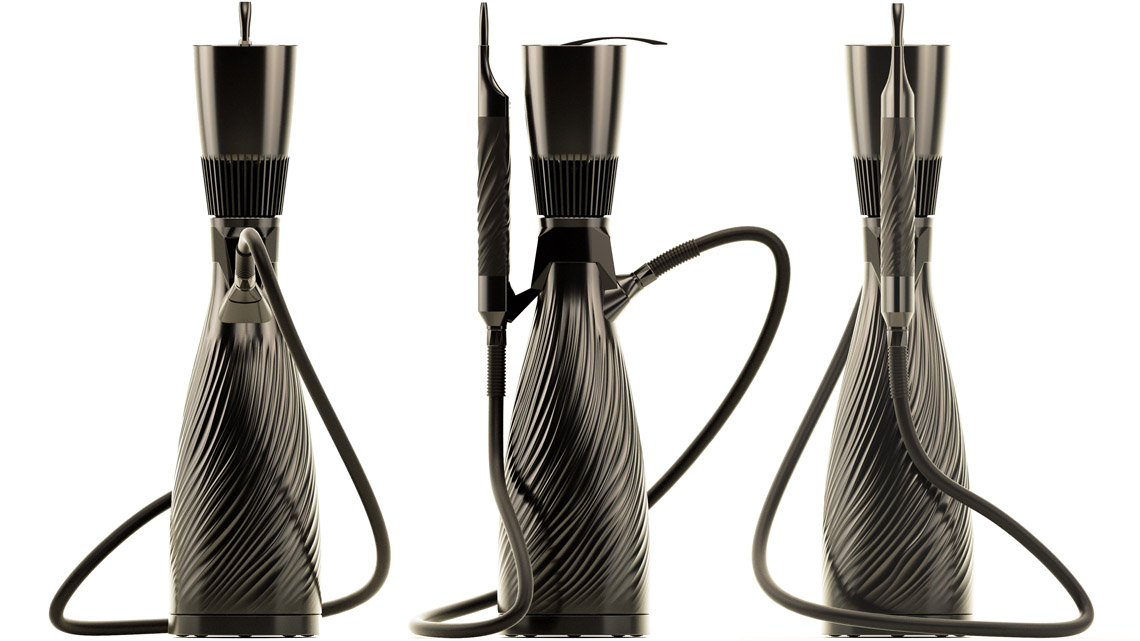
By the end of the third stage we have produced the finalized operational sample – complete in all details including the final finishing of the surfaces. All materials, colors, and textures are in their natural, final state.
By acknowledging and leveraging the customer's experience, I set out to understand the needs of the final consumers, experience their wishes, and assess their requirements. The resulting innovative solutions to the design and construction have already been acknowledged and granted patent protection. In all, we have produced a working prototype, the technical documentation kit, and the presentation kit, and developed the core solution for packaging, including all the necessary accessories.
The project is finished. Our hookah is now ready for mass production.